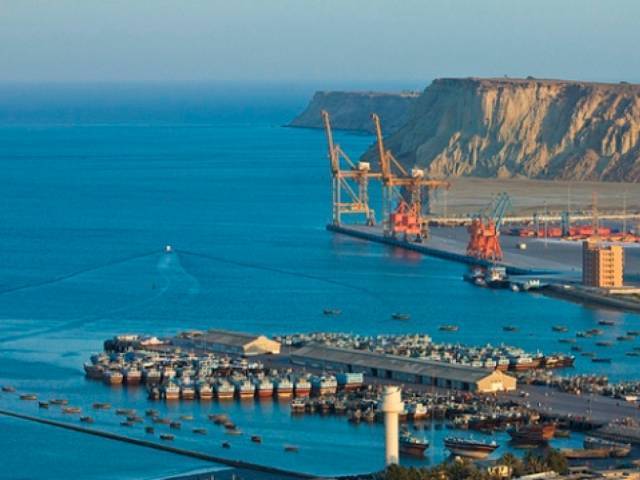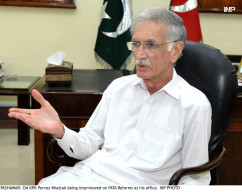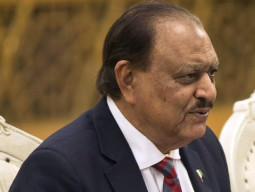
Development work resumed and the first shipments under the China-Pakistan Economic Corridor rolled through with a host of foreign and domestic tourists, but there were times when it seemed that the powderkeg of sectarianism was about to blow up.
After the Pakistan Muslim League-Nawaz (PML-N) was voted into government during the June 2015 elections, the party promised to pave over 80 kilometres of roads within the first 100 days of its government. While it may have missed that target last year, it did manage to accelerate development efforts during 2016.
CPEC benefits: Gilgit-Baltistan to get economic zone
Work on paving Shahrah-e-Quaid-e-Azam from Sakwar to Jutial Chowk was completed, while roads in Ghari Bagh and other parts of the city were fully or partially laid. Likewise, roads in various parts of Skardu town were metalled.
“There is finally something to cheer us up,” says Sabir Shah, a trader who lives in Gilgit – the capital of Gilgit-Baltistan, where dilapidated roads had become a running joke during the previous elected government.
“It was a matter of shame that no development took place for so long and the capital looked bad.”
In addition, the government also expedited work on a new building of G-B assembly in Jutial. Work on the building had started back in 2006-7 and was supposed to be completed by 2011-12. However, it was one of the many projects which faced delays.
Moreover, the government started work on the Skardu-Jaglot road – a Rs40 billion project for which a tender was recently awarded to the Frontier Works Organisation (FWO). The road was in a dilapidated condition and accidents on it had become routine.
“This was one of the promises we made before elections. We have now been able to fulfil this promise,” Chief Minister Hafeezur Rehman recently told the media.
As part of the multi-billion dollar CPEC project, work on Sost Dry Port was completed and the first of the shipments arrived. But as winter rolled in, questions were asked on whether closing down the high-pass of Khunjerab for traffic was viable for the success of the corridor.
While there is optimism surrounding the development, there are also widespread concerns over the quality of the work.
“There is development work all around,” says Mujahid Khan, a civil society activist. “But nobody is sure about the [quality of] materials being used,” he said.
As an example, he pointed towards the newly constructed roads which appear to be inferior to the ones built by the Chinese a few years ago. “The moment you touch the road connecting the Karakoram Highway near Sakwar area, you feel the difference. This one is substandard.”
Law and order
The region remained largely peaceful this year, especially with Muharram with Ashura passing without any incident.
Skardu likely to get cardiology centre at Gilgit-Baltistan University
However, there was a brief period - when Shia students staged a sit-in – which threatened to reignite sectarian tensions in the region.
The sit-in was against a ban imposed by the government to discourage religious events inside educational institutions.
“The law and order situation remained satisfactory most of the time,” says Maroof, a businessman. “Our business gets better only when conditions are favourable.”
Tourism
For the second year running, tourism seemed to grow – three years after attacks on an international team of mountaineers at the base camp of Nanga Parbat.
Adventure tourism showed no signs of slowing down, even though the summer climbing season was quite brutal with hardly any significant summits. However, an international team, comprising Simone Moro of Italy, Alex Txikon of Spain, and Ali Sadpara of Pakistan managed to make the first ever winter ascent of Nanga Parbat on February 26.
On the other hand, famous mountaineer Hasan Sadpara died of blood cancer, leaving the country in shock.
Apart from adventure tourism, the year saw foreign tourists return in earnest to the region from an American woman trying to visit 195 countries, to a Dutch couple riding their own microbus through the region, to New Zealander Olympic kayaker Mike Dawson negotiating the rapids in Astore. A friendship rally of cars from China also passed through the region on its way to Gawadar.
Officials claim around one million tourists visited the region this year. While these statistics cannot be independently verified in the absence of records, an overwhelming majority of the tourists were domestic.
“I don’t know the statistics but I can say the tourists flooded this region,” said Hidayatullah, a tour operator. “There was a time in peak season when hotels were filled to capacity and tourists would sleep in tents under the open sky.”
Constitutional limbo
Despite the promises made, the constitutional limbo, which has haunted the region since its independence, continued this year.
A committee formed by Prime Minister Nawaz Sharif to look into the options of making G-B a constitutional part of Pakistan also failed to deliver. The committee, headed by Sartaj Aziz, held several meetings, but without results.
Published in The Express Tribune, December 31st, 2016.






































COMMENTS
Comments are moderated and generally will be posted if they are on-topic and not abusive.
For more information, please see our Comments FAQ